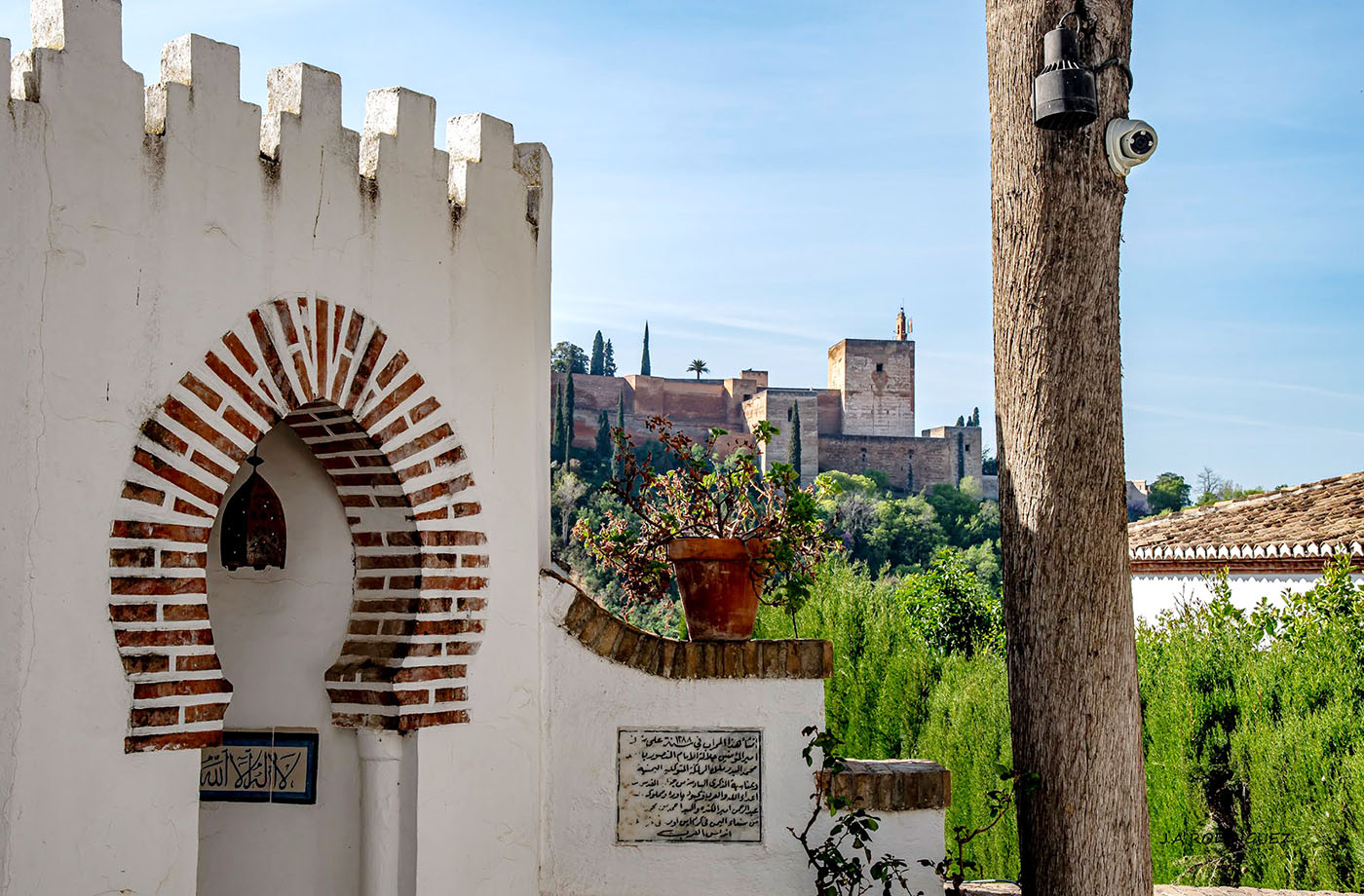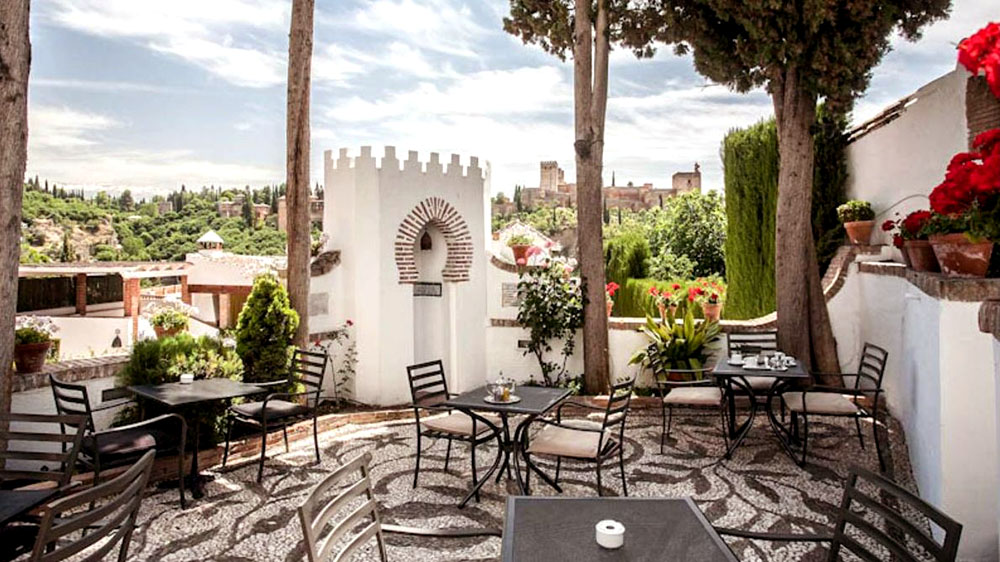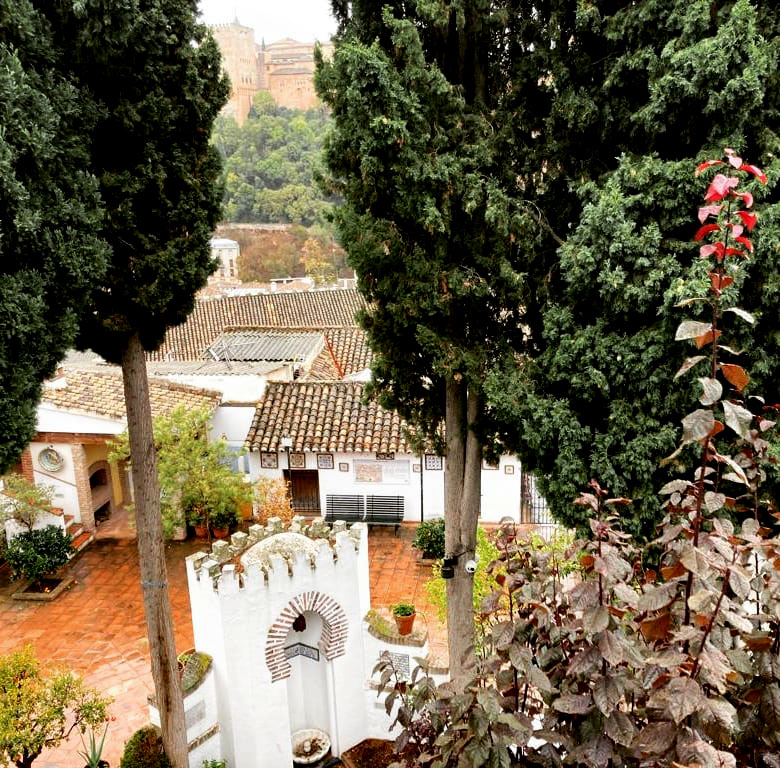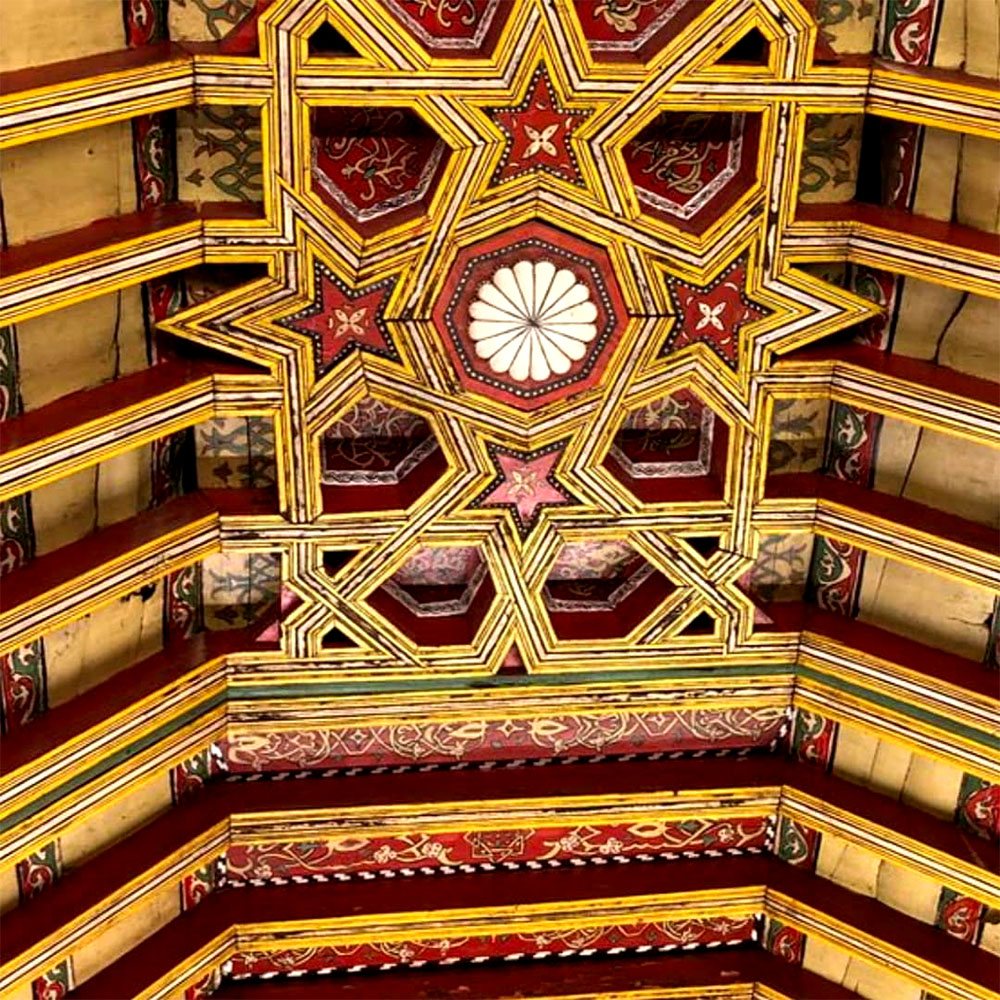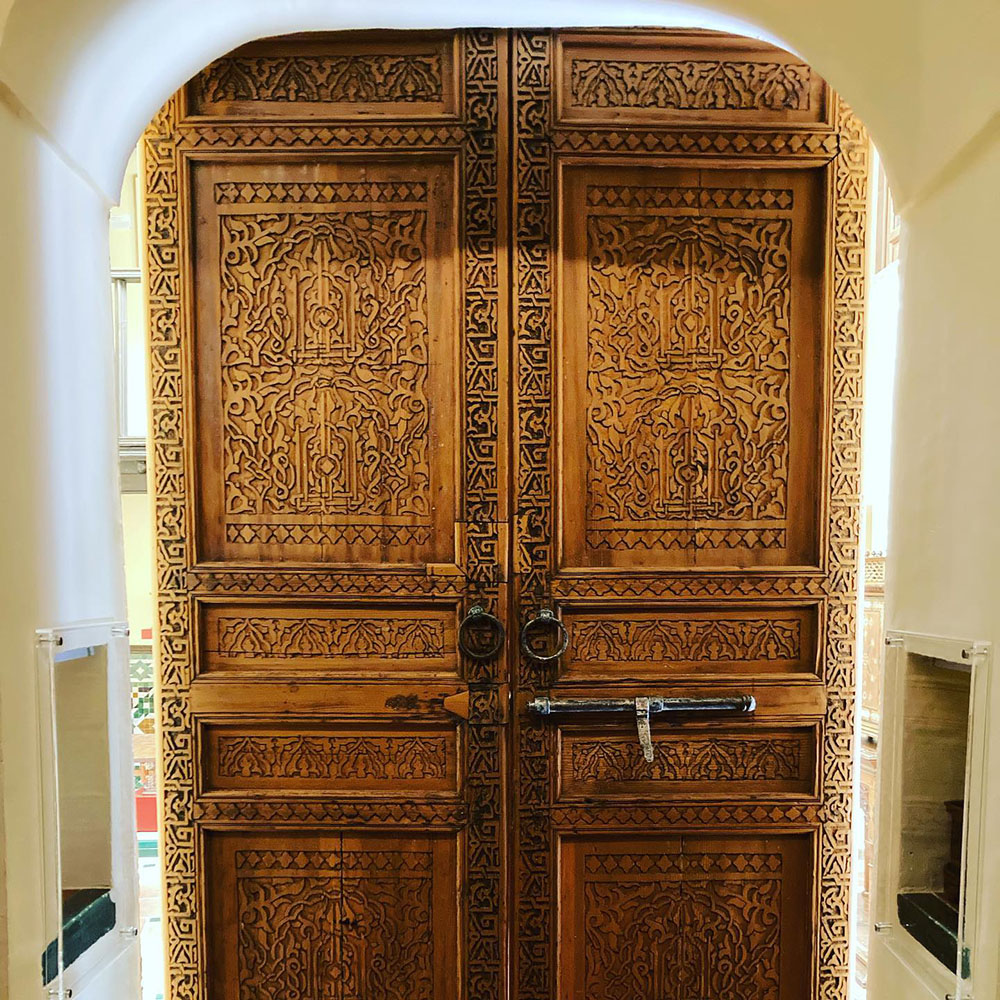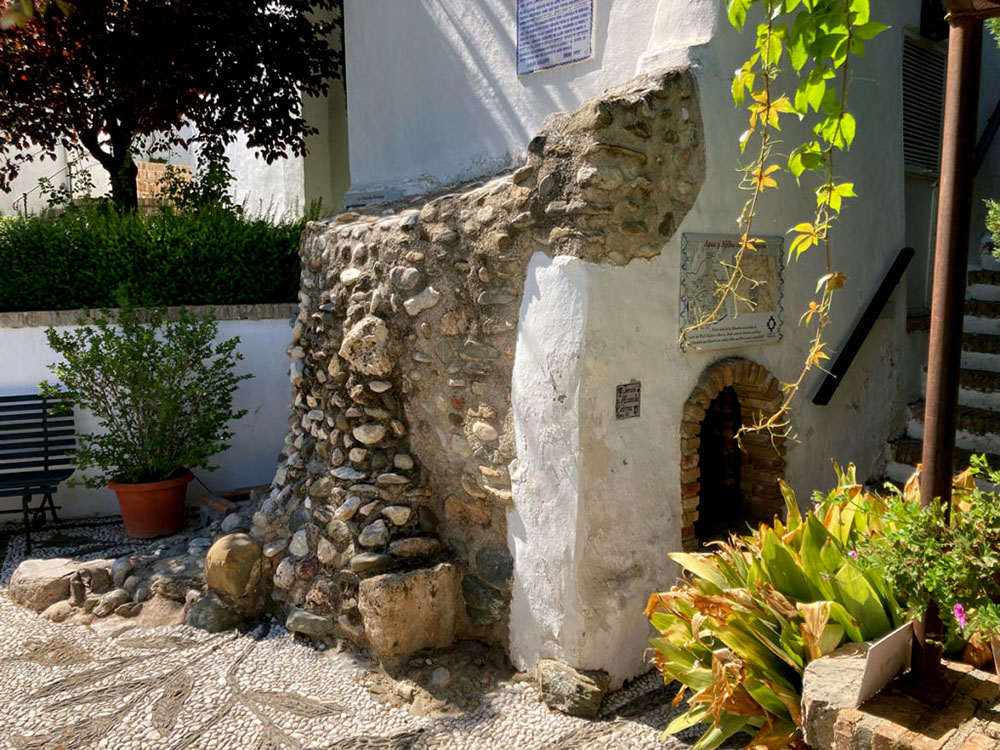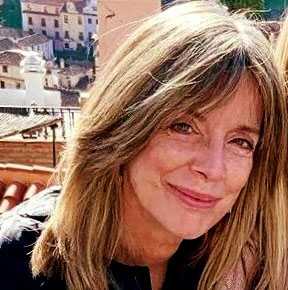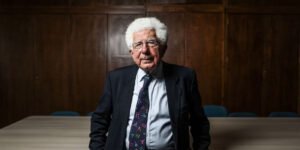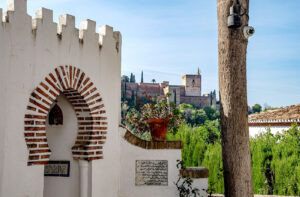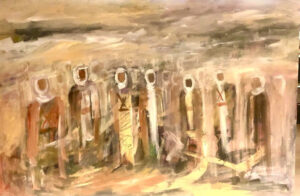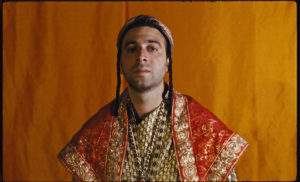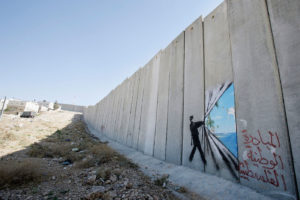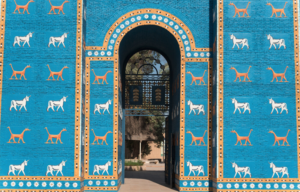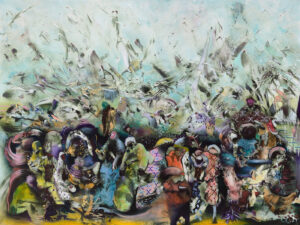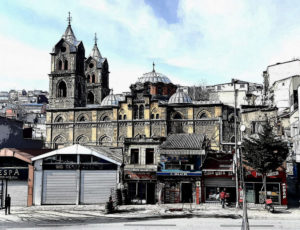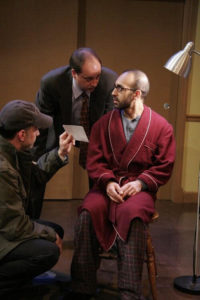The Alhambra in Granada is among the greatest architectural treasures of the Arab-Muslim world, along with the Taj Mahal, Istanbul’s Aya Sofya and the Blue Mosque in Mazar-i-Sharif in Afghanistan, not to mention the Dome of the Rock in Jerusalem. And just across from the Alhambra in Granada’s old Arab quarter, the Albaicín, is a carmen that has stood the test of time and remains a magical, mythical place.
Doreen Metzner
The memory of Spain’s medieval Moorish past still grips the imagination of today’s Arab-Muslim world. The nearly eight centuries of al-Ándalus, comprising the Emirate and then the Caliphate of Córdoba and the tiny, fractured kingdoms (taifas) that emerged from the dissolution of the Caliphate, are nostalgically perceived as the “Golden Age” of Arab-Muslim history. This sentiment can be appreciated in the 1962 film Lawrence of Arabia, directed by David Lean, in which Prince Faisal muses aloud to T.E. Lawrence, “… do you know, in the Arab city of Córdoba, there were two miles of public lighting in the streets when London was still a village… nine centuries ago?… I long for the vanished gardens of Córdoba.”
Faisal’s evocation of medieval Cordoba falls short of its full splendor. María Rosa Menocal in Ornament of the World and Carmen Pereira-Muro in Culturas de España remind us that, not only was there public lighting in the (paved) streets, but the city contained more than 200,000 houses, 50 hospitals, 900 public baths, 600 mosques and the Grand Mosque was a never-before-seen wonder. Trading in the far East, the Moors imported cumin, pepper, nutmeg, cayenne pepper, mint and basil, citric fruits, artichokes, carrots, eggplants, pumpkin, spinach, leeks, and celery to enhance the cuisine of the peninsula. Their architectural legacy is unparalleled, and they were masters in working leather, fine textiles, wood, metal, jewelry, and plaster. Their achievements in astronomy, philosophy, mathematics, medicine, agriculture, and engineering paved the way for the emergence of a modern Europe. They collaborated intellectually and artistically with the Christians and the Jews. So great were their achievements that the 10th century Saxon writer/historian and secular canoness Hrosvitha of Gandersheim described al-Ándalus as the “ornament of the world” in her writings. Its richness was in stark contrast with the material poverty of the Christian kingdoms located to its north.
All things must pass, though, and al-Ándalus was no exception. In January 1492, Boabdil, the last Nasrid sultan of Granada, handed the keys of the kingdom to the Catholic monarchs, Ferdinand and Isabella. Thus collapsed the last of the Islamic taifas. Then, barely three months after promising Boabdil that they would respect the practicing Muslims who remained in the defunct Nasrid kingdom and that religious freedom would be guaranteed to all, Ferdinand and Isabella signed the Edict of Expulsion of the Spanish Jews and then, in 1502, all Muslims still living in Castilla were forced by law to convert to Catholicism or be expelled from the country. Those who converted to Catholicism took Christian names and surnames and were baptized. They became practicing Catholics, at least officially. Nevertheless, they retained their cultural identity, many speaking Arabic, all dressing in Arab traditional garb and kept their musical and culinary traditions alive. These “converts” were called the Moriscos. They were not long for life in Catholic Spain, though.
The Moriscos and the Rebellion of the Alpujarras
On December 24, 1568, in the depth of the night, the eleven Morisco noblemen who comprised the Muslim half of the Government of Granada, walked in silence along the narrow and winding cobblestone streets of the Albaicín (Arab quarter) of Granada, toward the home of Fernando de Cordoba y Valor, also a member of the government. Cordoba y Valor was the most respected of the leaders of their community. As recounted in El misterio del Carmen, by Carlos Ballesta, the mood of each of the noblemen was sullen but purposeful. One by one, they entered the home of Cordoba y Valor and were guided upstairs to a narrow room on the second floor. Upon entering, all looked up, their eyes drawn to the coffered ceiling. It was a spectacular ornamented masterpiece, made of interlocking wood panels inlaid at varying depths and painted in bright tones of yellow, green, red, and white, assembled in geometric patterns.
Once gathered in the presence of their host and standing beneath the gorgeous ceiling, the noblemen made their intention clear. One by one, they placed their swords at the feet of Fernando de Cordoba y Valor and pledged allegiance to him as leader of the impending uprising against King Phillip II: the Rebellion of the Alpujarras. It was to begin that very night. One by one, each of them abandoned the Catholic faith, cast off their Christian names and surnames and took on Arab-Muslim names. Fernando de Cordoba y Valor took the name Mohammed Ibn Umayya, in direct reference to his ancestral connection to the Ummayad leadership of the Caliphate of Córdoba. He became popularly known as Aben Humeya.
Some 76 years had passed since the fall of Nasrid Granada and 66 years since the beginning of the forced conversions. Three generations of Moriscos had suffered discrimination and vexations of all kinds, like the expropriation of their lands, the resettlement of Christians on Muslim lands, the levying of exorbitant taxes, impediments to their very prosperous silk trade on the Mediterranean. They suffered the rejection of the Christian population at large and were subjected to interrogation at the hands of the Holy Inquisition. Enough was enough. Following the ceremony, that very night, Fernando de Cordoba y Valor, now called Aben Humeya, took off on horseback with his family and headed for the Alpujarra Mountains to launch what became a bloody three-year civil war between Christians and Moriscos.
Just one year later, and as that civil war raged on, Aben Humeya was murdered by Aben Aboo, a rival from the ranks of his own camp. Over the following two years, the Moriscos were overwhelmed by the Christian armies, led by Juan de Austria, half-brother of Phillip II. Defeat was inevitable and, like the Moors before them, they were crushed. Then, in 1609, under the reign of Phillip III, 300,000 Moriscos were definitively expelled from Spain and sent into an eternal north African exile.
Granada 1973
In the summer of 1973, I was 18 years old and spending three weeks in Granada. There I followed a sacred daily ritual. Every morning found me at the gates of the cluster of Nasrid palaces called the Alhambra, waiting to enter and spend the mornings roaming the palace halls, enthralled by their beauty. I would run my fingertips gently across the words carved in Kufic calligraphy, on the delicately carved plasterwork panels that cover the walls of the Comares Palace. It was spiritual poetry that had been set in place there in the 14th century by the sultans of the Nasrid dynasty. Hard as rock to the touch, but as fine as lace in appearance, the horizontal panels had been laid into the walls at varying heights above the floor level and ran like broad ribbons across every room of in this cluster of palaces. The inscriptions contain excruciatingly beautiful poetry — the most valued art form to the Andalusian Moors.
One evening, I met up with a friend named Antonio (a native of Granada) who invited me to have a drink with him at a spot in the Albaicín, which is the high Casbah-like hill facing opposite the Alhambra, with its tangle of steeply sloped stone-paved streets, walled gardens, Moorish shops selling rugs and lamps and Moroccan tea shops. When in the Albaicín, you might believe that you are in Algiers or Marrakesh, rather than in southern Europe.
“I’m taking you to a special place,” said Antonio, as we wove our way up the steeply inclined stone-paved streets of the Albaicín, past Moorish cafés, pastry shops and souvenir stores.
When we finally reached our destination, nearly at the highest point of the Albaicín, we walked past the doorway of a two-story, 15th century Morisco house and into its lush, terraced gardens. It was a breathtaking sight. The gardens were lined by fragrant myrtle bushes and dotted with small circular tables placed at varying levels of the garden where an occasional couple or small group of friends could savor a glass of dry sherry and enjoy almonds or olives while gazing at the Alhambra, lit up like gold and appearing to be floating in the dark night sky.
The Aben Humeya house and its gardens is one of hundreds of carmens in the Albaicín. The name carmen derives from the Arabic word karm, meaning vineyard or orchard, and it eventually came to signify the typical Arab or Morisco house in the Albaicín which is hidden behind two-meter high walls, with its garden or orchard and fountains. Aben Humeya was a typical terraced carmen of the Albaicín.
We were led to a table where we ordered our sherry. I was taken by the sight of the shimmering Alhambra, the fragrance of the myrtle and the nostalgic chords of the Spanish guitar music that was piped into the garden.
Once the waiter had taken our order, Antonio turned to me. “The owner of this place is a relative of the future king of Spain. His name is Alfonso de Borbón and his branch of the Borbón family moved to the United States long ago. He was born and raised in California and he’s a scholar, an Arabist. He lives right here in this house. I think we should knock on his door, and you should introduce yourself to him. I’m sure he would be happy to meet an American student who visits the Alhambra every single morning. I’ve never met him, but certainly any Arabist from California would find a kindred soul in you. Let’s do it!”
“Oh no. Let’s just enjoy the view of the Alhambra and the music.” I thought the idea was absurd and doubted it was meant to be taken seriously, but Antonio would not take no for an answer.
“This could be a unique opportunity,” he said. “Alfonso de Borbón has vast knowledge about something that interests you. You can learn a lot from him. Come on!”
With that, he stood up and gestured toward the doorway of the Morisco house. “Let’s go.” He was so determined to make this happen that I fought back my apprehension. I rose and followed him along a narrow brick path lined by more myrtle, up several steps, and to the doorway of Alfonso de Borbón’s 15th century home. Antonio knocked firmly and we waited.
Almost instantly the door was opened by a butler who, upon hearing Antonio’s request to meet the owner of the home, asked us to wait for “just one moment.” Then, after disappearing momentarily, he reappeared and ushered us into the house. It was a two-story structure and the lower level, where we stood, had a terracotta tile floor, and was comprised of a small interior patio, with a small, rectangular reflecting pool with a gurgling fountain, two adjacent rooms and a narrow staircase with a wooden handrail that led to the upper level. I looked up and saw that, overlooking the patio, a long open balcony of sorts served as the upstairs hallway and led to several other small rooms, one of which had an ornate wooden coffered ceiling, painted in bright yellows, blues and greens, in the Morisco style. I had no idea at that moment that a dramatic chapter of Spanish history had been written in that room on Christmas Eve in 1568.
Alfonso de Borbón made his appearance, descending the staircase into the foyer where we awaited him. He was a tall man, 60 years of age, with blue eyes, fair hair, and an upright bearing. His gaze and his gestures were welcoming and warm.
“Good evening and welcome to Aben Humeya.” He held out his hand and gave us each a strong handshake. “Would you like to join me for a glass of fino, dry sherry, while we talk?” When we assented, he immediately requested his butler bring us three glasses. His gaze then rested on me, and he appeared to be curious.
But I did not want to waste time talking about myself since, in a sweeping glance, I had caught sight of manuscripts and ancient books in Arabic and Spanish on display in glass cases, black and white photographs of him on camelback in a desert somewhere alongside another man who appeared to be quite important, pieces of Morisco pottery that must have been priceless and the house itself.
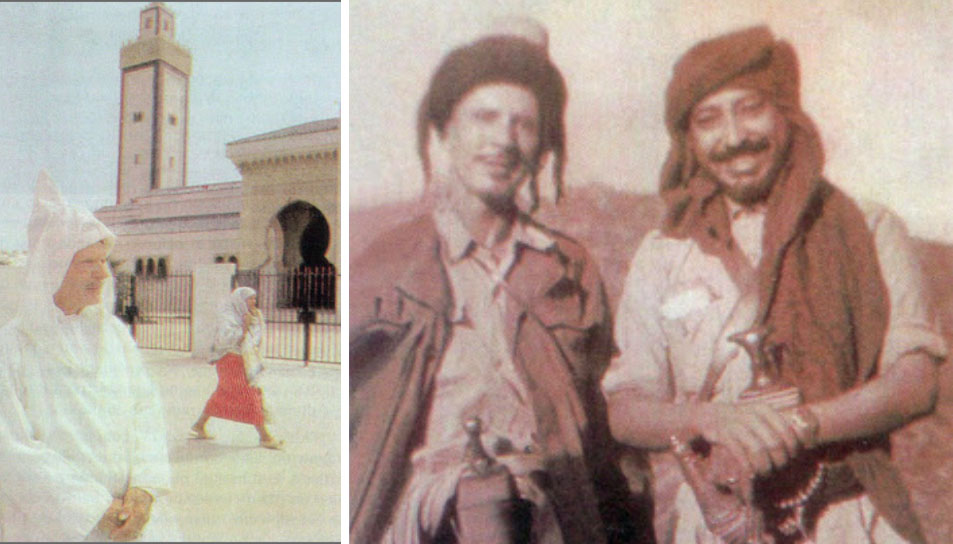
I cut to the chase and asked him about himself.
“How did a Californian end up in this incredible place?” I asked. “How did you become interested in Arabic and in Muslim cultures? This is so distant from your native California.”
Holding his glass of fino in one hand, he laughed. “You’re right. I’m a long way from California. I was drawn to the Arab world, maybe much as you have been drawn to Granada and the Alhambra, when I was very young. I studied Arabic and l lived in Morocco for a while. In 1955, I got a degree in Arabic and Arab Studies at the American University of Beirut. I always felt more at home spiritually in Muslim countries, so much so that I eventually converted to Islam. I found a warmth in it that was lacking for me in Catholicism.”
“I eventually made my way to Angola, where I met King Muhammed al-Badr of Yemen. We became good friends. Later I went to visit him in Yemen where I ended up joining the military effort to fight off a coup d’état against the monarchy. It turned into a civil war. I had been a U.S. Marine, so that experience made me a useful military advisor to the king. Nevertheless, he eventually failed, for the coup was successful, and he ended up in permanent exile in the UK.” Alfonso walked toward a bookshelf where several framed black and white photos of himself were on display. He pointed to the one that had caught my eye. In it, he was on camelback next to another man mounted on another camel. Another photo of him with al-Badr, this time not mounted on camels, appears in the article entitled “Alfonso de Borbón, Príncipe de Condé, primo del rey Juan Carlos, un pirate en Villena” on the Villena news website (Villena is a township in Valencia, frequented by Alfonso de Borbón during their local festivities).
“Here I am with al-Badr. He’s a good soul and he put up the good fight. I regret the outcome of that conflict.”
I realized I was in the presence of a sort of modern-day Lawrence of Arabia and was most impressed by the fact that he spoke fluent Arabic and had converted to Islam. This was unusual for a former Marine from southern California.
“How did you get from Yemen to the carmen of Aben Humeya in Granada?” I asked.
“While in Yemen, toward the end of the war, an advisor to King al-Badr entrusted to me a chest full of original documents referring to the Morisco uprising in Granada against King Phillip II in 1562. He, like many of the most prominent families of Yemen, descends from the Umayyads who ruled during the medieval Caliphate of Córdoba, so they have a strong spiritual tie with their distant Spanish past and have never forgotten the glory of al-Ándalus. It is like a lost paradise to them. When he gave me the chest, the king’s advisor urged me to locate this mythical house and to restore the memory of Aben Humeya, the Moriscos and the Rebellion of the Alpujarras.”
He paused for a moment. “The chest contained documents about that uprising. Phillip II had stripped the Moriscos of their basic rights. Right here in this house, in a room on the second floor, a group of Morisco noblemen assembled in 1568 to swear allegiance to Aben Humeya, the nobleman who owned this house. He thus became the leader of that historical rebellion. That night took Arabic names, renounced Catholicism, and embraced the Islamic religion of their ancestors. All of that happened right here on the second floor of this house, in that room with the coffered ceiling.”
“The letters, legal documents and maps that were in the chest I was given hinted at the location of this house and spoke in detail of the historical events that took place here. When I was given the chest, I felt an immediate connection to this story, and I felt strangely compelled to comply with the request to find the house. When King al-Badr was eventually forced into exile, I accompanied him to Granada, invited by General Franco, in 1968. Then, when al-Badr left, I stayed here, determined to locate this house which has so much historical meaning to Muslims… and to me, as well. I searched until I finally found it, purchased it, and began its restoration. I set up the bar in the garden to help finance the restoration. I’ve done quite a lot. When I first arrived, it had been abandoned and was in bad shape. It’s a costly and time-staking project, but I feel compelled to complete it.”
He paused, smiled at me, and asked, “So… where in the United States are you from, and what brings you to Granada and to Aben Humeya? I hear you make daily visits to the Alhambra. Is that so?”
“I’m from New York and I study at Georgetown University. I’m spending the summer in Spain. I came here for the first time last year with my high school and we visited the Alhambra. From the moment I stepped inside, I was spellbound. I had an intense reaction to it, but I didn’t know why. So, I promised myself I would come back very soon to see it again, to learn about it and to try to understand what it means. I could sense that everything in the Alhambra had some kind of transcendental meaning. So, now I’m back and I spend every morning there, trying to understand it.”
“Have you deciphered any of its secrets?”
“I think I’m able to sense its spirit more and more, but I’d like to understand what the sultans of Granada wanted to express in building it.”
I took a sip from my glass of fino. “I suspect that I don’t have access to the entirety of the Alhambra. It looks like there are areas that are closed off to the public. That leads me to think that there are hidden secrets in those places, though I guess that’s a childish thought.”
“More than hidden secrets,” he said, “there are rooms that have never been restored and that are in such a state of disrepair that it would be out of the question to open them to the public. Where do you think those closed-off spaces are located?”
I mentioned a few of the places where I suspected there was something behind walls and locked doors.
“Well, well,” he said. “You’re very observant. Those are, in fact, areas of the palace that are off-limits.” He paused. “Would you like to see what is behind those doors and walls?”
“Yes! Of course I would! I would give almost anything to see what’s in there. Is it even possible?”
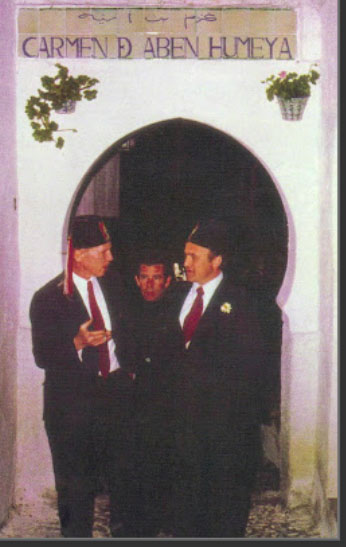
“Yes, I think so. There is a ticket called the pase circular, or ‘circular pass,’ which is sold exclusively to archeologists and scholars, and it grants them access to those areas of the Alhambra for two weeks. It is a bit expensive, but it obliges the Alhambra staff to provide you with a guide who will open the doors to these areas and accompany you to see them. Since you are clearly too young to be a scholar or an archeologist with expertise in Muslim Spain, they may refuse to sell it to you. If that happens, tell them I sent you. Then, if they still resist, come back tomorrow and I’ll accompany you there to insist they allow you into the ‘inner sanctum.’”
Antonio and I spent another 30 minutes or so conversing with Alfonso de Borbón in his magical abode and then we thanked him for the fino, his hospitality, and the priceless information he had shared with us. I hoped I would see him again one day (unfortunately I would not) and knew that this brief encounter would remain intact and burnt into my memory for the remainder of my life.
The following morning had me, as ever, waiting at the entrance to the Alhambra. Once the door of the ticket office swung open, I entered, and approached the woman at the ticket desk.
“I’d like to purchase a pase circular, please.”
“Pase circular? We sell no such thing.” She opened a wooden drawer in her desk and pulled out a small stack of normal day passes, clearly intending to sell me one, as she had every day for nearly two weeks.
“I believe it’s a 14-day ticket that gives the purchaser access to the parts of the Alhambra which are closed to the public.”
“There is no such thing,” she said without conviction. “Where did you hear about that?”
“Alfonso de Borbón, who lives in the Aben Humeya house in the Albaicín, told me about it. He said that if I’m unable to purchase it, he will come here himself and buy it for me.”
“Alfonso de Borbón? From Aben Humeya? Bueno... Alright.” She opened another drawer and pulled out a smaller stack of large pink rectangular passes with red print. A red circle was at the center of the ticket which read Pase Circular and detailed the conditions of the purchase of the ticket.
“Here,” she said, handing me the ticket. “This is never sold to students, and I don’t know why Alfonso de Borbón would want to have one of our civil servants spend his time showing these spaces to one, but if he says so, he must have a reason, and so it will be. But we can only show these spaces for one hour each morning, from ten o’clock until eleven. Señor José Sánchez will wait for you here each morning with his set of keys and he will accompany you.”
“Excellent.” I could not believe my luck.
I waited for until ten o’clock at which time Mr. José Sánchez appeared. He was carrying a brass ring from which dozens of keys jangled. He wore a faded uniform, was rather short and stocky and initially very matter of fact about the task at hand.
“Good morning, señorita. Is it you to whom I’m to show the restricted areas of the Alhambra?
“Yes, that’s me.”
“You are… an archeologist? Or a student of archeology?”
“No, I’m a student of Spanish language and history. Don Alfonso de Borbón recommended I visit the restricted areas of the Alhambra.”
“And why did he do that, if it’s not an indiscretion?”
“I met him last night at Aben Humeya. I told him I visit the Alhambra every day and that I’m enraptured by it. I want to understand it.” I knew my response was inadequate, but I had no better story than that.
His eyebrows shot up and he half smiled. “Enraptured? Very well then. We have only one hour per day, so let’s begin.”
And so, for the next week, I followed Mr. José Sánchez from one space to another, waiting for him to unlock each door and push it open so we could then step into the dusty, dim rooms that had never been restored, as had the rest of the Alhambra. I stepped through crumbling Arab baths with scattered remnants of glazed tilework now cracked and broken and harem quarters with slats of bright light beaming through the wooden jalousie windows into the dark silence. I entered dank dungeons and spacious empty military barracks and wondered if these spectral spaces would ever be restored and opened to the public.
As I walked through these spaces, it was impossible not to imagine the people who had once lived there: the sultans, their families, the members of the court, the soldiers and the imams, the craftsmen, and the distinguished visitors. I also thought of Alfonso de Borbón and silently thanked him for this experience. I could not know that, like the very sultans of the grand Nasrid dynasty, and the Moriscos, his days in the paradise of Granada would end abruptly and in tragedy.
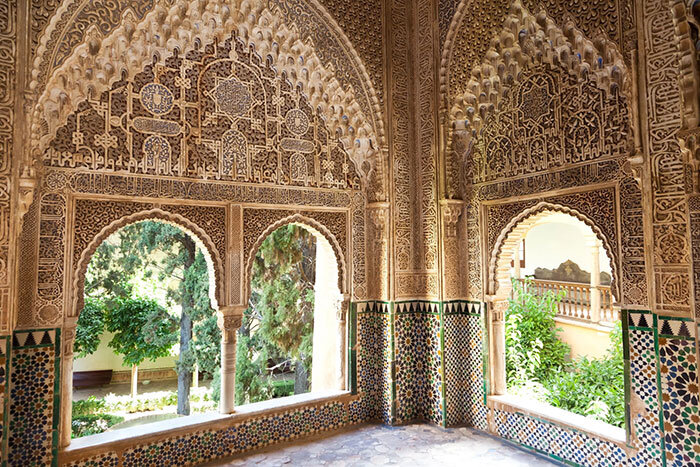
Granada, early 1990s
Two decades passed. I often thought of the Alhambra, the Aben Humeya carmen and Alfonso de Borbón, sometimes wondering if I had imagined it all. In the early 1990s, I found myself wandering through the cobblestone streets of the Albaicín in Granada, remembering that now distant summer of 1973, and my visits to the hidden rooms of the Alhambra. I remembered Alfonso de Borbón and wondered if he could still be alive and if he were still living in the Aben Humeya house. I tried to recall where in the Albaicín’s labyrinth it was located, but to find a house in the Albaicín is especially challenging since nearly all of them are hidden behind high whitewashed walls. Nevertheless, I eventually came upon a spot on a road that looked familiar and suddenly I realized what I was looking at. High on the façade of a narrow white house just below where I was standing, now chipped, and deteriorated, letters fashioned in wrought iron read “Aben Humeya.”
The house was in a state of abandon. I peered through the gate and saw that the once manicured and elegant gardens were now overgrown with wild plant life and in sore need of attention and care. The sight of it saddened me.
Suddenly I heard steps behind me and turned. An elderly woman had descended the steps.
“Señora!” I called out to her. “Excuse me, but are you a neighbor here?”
“Sí. Yes, I am. How can I help you?”
“I once knew Alfonso de Borbón who owned the Aben Humeya house. I haven’t been here in many years, but I was hoping to find him here now, but the house appears to be abandoned. Do you know where he is or what has become of him?”
“ Yes,” she said. “Alfonso de Borbón left here many years ago. He had restored the house beautifully. He was an educated and refined man, a good neighbor. But there was a tragedy. He had guests in the house and one night there was a gas leak from an area heater. Two young men, friends of his, died in the house asphyxiated. Don Alfonso was devastated. He sold the house and left Spain and he never returned. He might be alive, but nobody in the Albaicín has had news of him. The house is owned by a friend of his, but it has been several years since anyone took care of it. It was such a pity.”
I was struck by this news. In one single night, Alfonso de Borbón had lost his paradise, his life’s purpose and two friends. It was heartbreaking.
I thanked this helpful woman and walked back to take a last look at the garden. I remembered him then, spiritually attached to the Morisco history of the Albaicín and so devoted to preserving the history of the carmen. He was proud of the restoration he had done. But now the chipped paint, the broken tiles and the overgrown garden reminded me of the abandoned, unrestored rooms of the Alhambra that, thanks to him, I had seen so many years before.
I thought then of Boabdil, the last of the Nasrid sultans, defeated by the Christian army in 1492, forced to abandon this paradise forever. My thoughts also turned to Aben Humeya himself, murdered by a rival, and whose failed rebellion against King Philip II led to the final expulsion of the 300,000 Moriscos in 1609. Like Alfonso de Borbón, they had all been expelled from this heavenly place. The irony of it all was painful.
Over the course of the following decade, I occasionally checked online to see if Aben Humeya had been restored once again and opened to the public. I wanted very much to revisit it. Finally, in 2019, I saw that it had been reopened as a restaurant. In May of that year, I made a reservation, thrilled at the thought of being once again in the carmen.
Finally, I walked through the gate that I had revisited so many times in memory. The young maître d’ asked me for my name.
“Have you ever been here before?” he scanned the list of reservations for my name.
“Actually, I have been here before… 46 years ago. It was a very special place.”
He looked up at me abruptly. “46 years ago? By any chance did you meet Alfonso de Borbón?”
“Yes, I did meet him, and I feel indebted to him because he facilitated my visits to the areas of the Alhambra that were not open to the public. That was unforgettable.”
The young man put his pen down abruptly. “You should meet my father-in-law. He’s the current owner of Aben Humeya; this is his restaurant and he’s restoring the house to turn it into a museum.”
The young man came out from behind the desk he was using and addressed a man with a distinguished air who was conversing with a small group of people. The two men exchanged a few words and the proprietor of Aben Humeya approached me. He held out his hand.
“It’s a pleasure to meet you,” he said. “My name is Carlos Ballesta. I’ve been told you were in this house in the 1970s and that you met Alfonso de Borbón. I would like to hear about it.”
I gave him a brief account of my encounter with his predecessor and of my unforgettable visits to the Alhambra.
“I’m not entirely surprised,” he said. “Alfonso was a gracious man.”
Dr. Carlos Ballesta, famed surgeon specialized in the treatment of morbid obesity and diabetes and co-inventor of the laparoscopy, had studied medicine in Granada. He has taught and performed surgery in many European nations, in Latin America, the Middle East, and in the United States. He holds a Doctor Honoris Causa from multiple prestigious universities and, coincidentally, has offered his highly specialized services as surgeon in Yemen. He is also a long-time collector of rare books, manuscripts, and maps, as well as painting, sculpture, and ceramic pieces that date as far back as Spain’s Iberian period. He is the author of numerous historical novels, including El misterio del Carmen (Comares Editorial, Granada, 2008) which recounts the interlocking stories of Aben Humeya and Alfonso de Borbón. His personal history is as colorful as that of Alfonso de Borbón.
He told me that in the 1990s, he became interested in purchasing a carmen in the Albaicín. A friend spoke to him of Aben Humeya as a possibility. He was already acquainted with the house, as he had met Alfonso de Borbón in 1973. Thus, he contacted the owner of the carmen who, by now quite aged, was willing to sell.
When Dr. Ballesta visited the carmen, the sight of the brilliant coffered Morisco ceiling, the mihrab in the garden that had been built by Alfonso de Borbón, the interior patio with its small reflecting pool and the fascinating story of the place fired his imagination and inspired him to restore it. He bought the carmen and has meticulously transformed the house into a museum containing books, manuscripts, maps, letters, and artefacts from the times of the Moors and the Moriscos which honor the memory of Aben Humeya and the Rebellion of the Alpujarras. He has created the Carlos Ballesta Foundation to manage and protect the museum which will open to the public in 2024.
The restoration of the house and the creation of the foundation bring Mohammed Ibn Umayya — Aben Humeya — to life and fulfill Alfonso de Borbón’s interrupted dream. They shed a new light on an unjustly forgotten piece of the history of the Spanish Moriscos. The Aben Humeya carmen and its story also exert an almost hypnotic attraction on many, like Alfonso de Borbón, Carlos Ballesta, myself and many others and bring us together in an unending chain of circular, interconnecting stories that begin on Christmas Eve, 1568.



